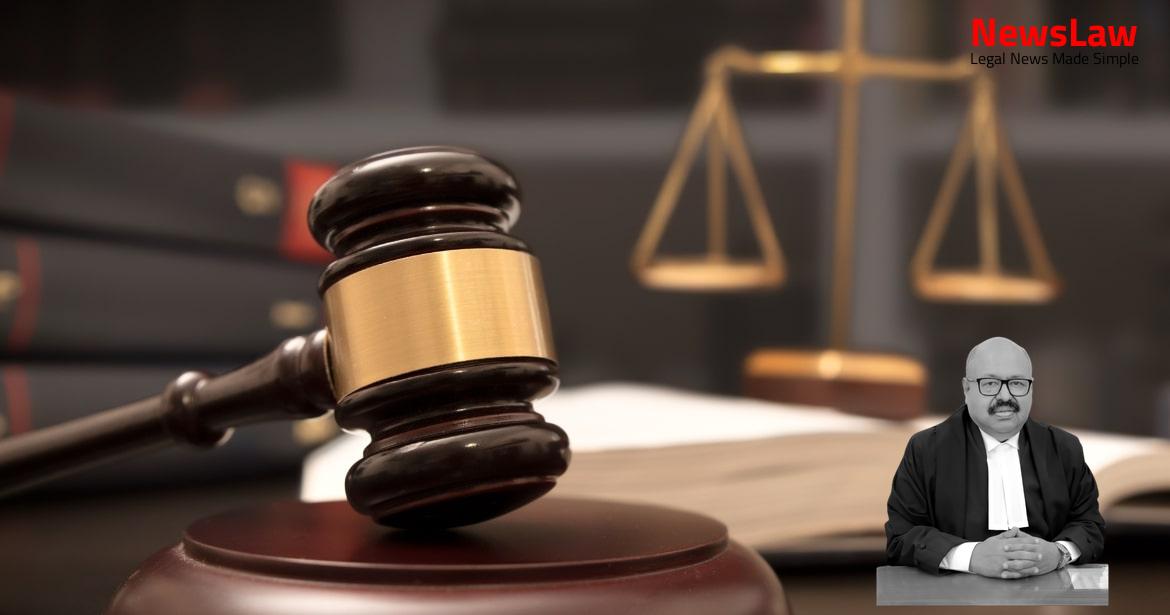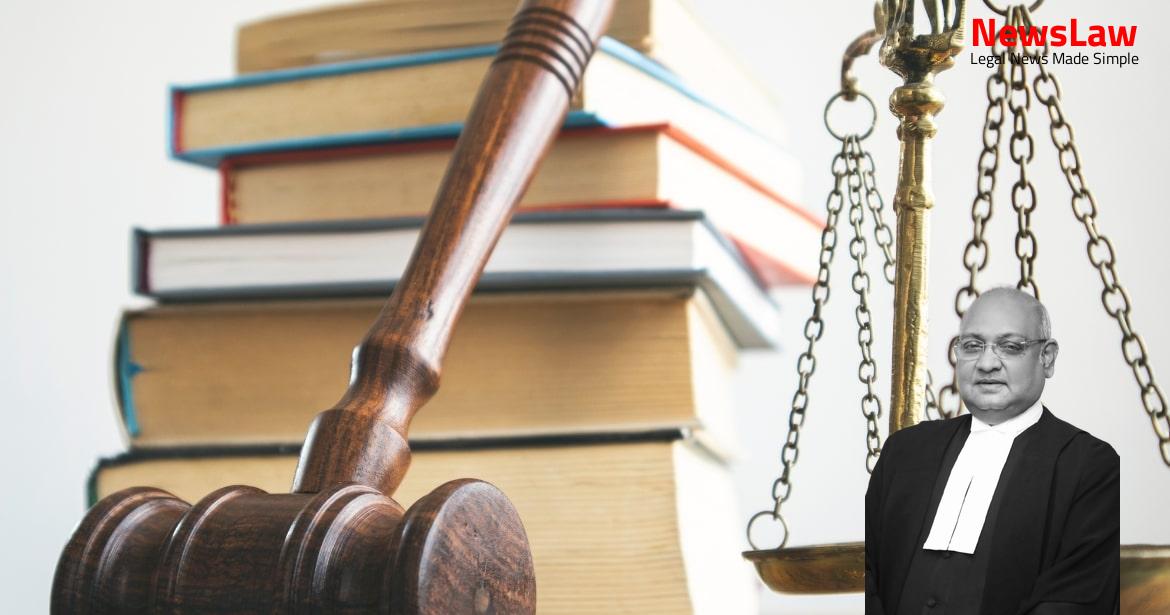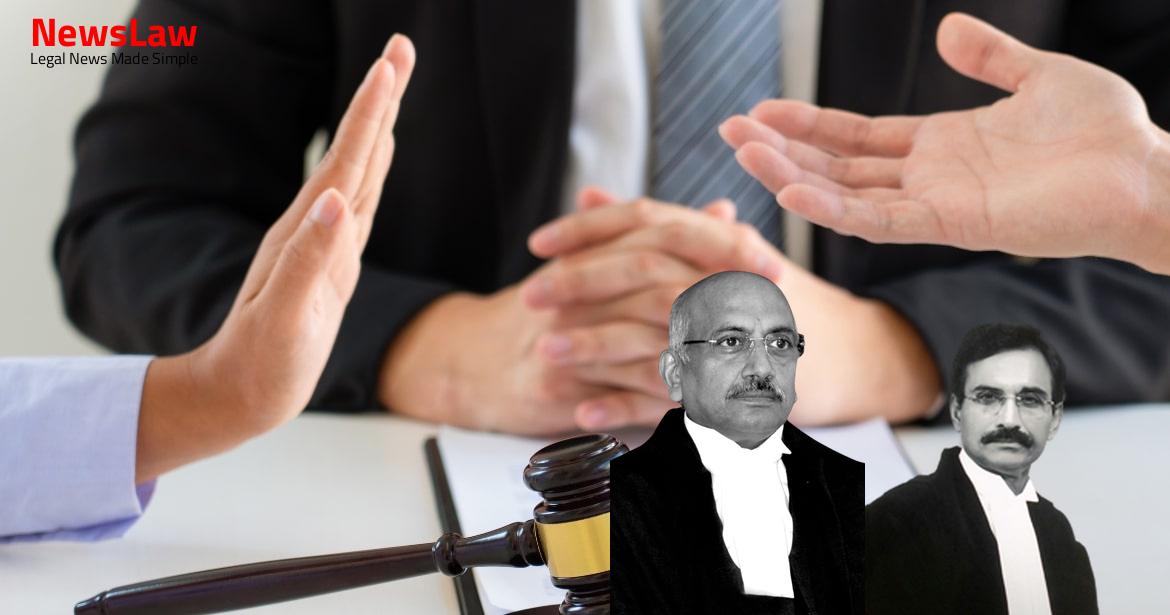The judicial analysis of legislative intent in various cases sheds light on the retrospective application of clarificatory amendments in statutory laws. This summary delves into how the court interprets statutes, including declaratory Acts, to ascertain legislative intent and retrospectivity. The focus is on resolving ambiguity in legislative provisions for effective implementation, ensuring clarity and adherence to the law. Stay tuned to uncover the complexities of retrospective application in legal proceedings.
Facts
- CIRP initiated on 3.8.2017 upon admission of Company Petition.
- GMSPL aggrieved by NCLAT observations and filed Company Appeal.
- Multiple Company Appeals filed by different parties related to rejection of claims and Resolution Plans.
- NCLAT approved Resolution Plan of GMSPL on 14.11.2018.
- Various appeals and applications filed challenging rejection of claims and approval of Resolution Plan.
- RP invited Expression of Interest (EOI) and received multiple Resolution Plans.
- Resolution Plan of GMSPL approved by CoC with more than 89.23% voting share.
- Several legal proceedings and challenges by different parties regarding claims and Resolution Plan approvals.
- NCLT and NCLAT orders and observations on the Resolution Process.
- NCLAT observed that after the moratorium period, individuals can approach a civil court or a court of competent jurisdiction for legal recourse against the Corporate Debtor.
- Appellant Deepak Singh claimed to have an outstanding amount from APNRL and asserted his status as an Operational Creditor, but his claim was rejected by the RP.
- NCLAT concluded that the appeal did not meet the grounds specified under Section 61(3) of the I&B Code, hence relief was not granted.
- All existing proceedings are considered null and void following NCLT’s approval of the Resolution Plan.
- The Allahabad High Court suggested the appellant pursue the available remedy of filing a second appeal under the VAT Act regarding the Resolution Plan approval.
- The appellant, despite being dissatisfied with the High Court’s decision, remains free to seek relief through the appropriate legal channels.
Also Read: Presumption of Genuine Endorsements in Cheque Case
Issue
- Consideration of whether the amendment is clarificatory/declaratory or substantive in nature.
- Determining the impact of the amendment on dues pertaining to a period before 16.8.2019 where Section 7 petitions have been admitted.
Also Read: Medical Negligence and Compensation: A Landmark Decision
Arguments
- The appellant challenges the judgment and order passed by the Division Bench of the Jharkhand High Court.
- Both Judges have written separate judgments.
- The non-exercise of jurisdiction under Article 226, despite the availability of an alternative remedy, is a rule of self-restraint.
- Entertaining a petition under Article 226, despite the availability of an alternative remedy, would be permissible in appropriate cases.
- The High Court’s error in refusing to entertain the writ petition solely on the ground of an alternative remedy being available.
- Various High Courts have held that statutory dues prior to the admission of the Section 7 application, not part of the Resolution Plan, shall stand extinguished.
- Interference would be warranted within the limited parameters of judicial review available under the Statute.
- The 2019 Amendment to Section 31 is clarificatory in nature, declaring and clarifying the existing position of law.
- The respondent authorities failed to submit any claims in response to public notices issued by RP despite being aware of the Resolution Proceedings.
- Similar provisions are made in the Resolution Plan submitted by GMSPL.
- Respondent’s submission that they have not participated in the proceedings conducted by RP, CoC, NCLT, NCLAT, and even this Court.
- Allegation of fraudulent conduct by RP/CoC by the respondent.
- Request for settlement of legal position by the Court by the intervener/applicant.
- Claim by the respondent that the entire process conducted by RP and CoC is fraudulent.
- Request for EARC to be treated as a ‘financial creditor’ and given representation on CoC.
- Intervention application filed by Tata Steel BSL Limited regarding Revenue Authorities continuing proceedings for dues owed prior to NCLT approval of the resolution plan.
- Issues raised in the intervention application by Tata Steel BSL Limited regarding CIRP proceedings.
Also Read: Remand of Writ Petition for Restoration and Decision on Merits
Analysis
- Contracts of guarantee establish co-extensive liability of principal debtor and surety, ensuring creditor’s remedy against both parties.
- Judicial review of Committee of Creditors’ commercial decisions limited to specified sections of the I&B Code.
- Legislative intent clarified through amendments to I&B Code to address unintended consequences and provide clarity.
- Interpretation of statutes, including declaratory Acts, to ascertain legislative intent and retrospectivity.
- Cases cited to exemplify retrospective application of clarificatory amendments in statutory laws.
- Interpretation principles applied to resolve the ambiguity in legislative provisions for effective implementation.
- Judicial analysis of legislative intent in various cases to support retrospective application of clarificatory amendments.
- Operational creditor is defined as a person to whom an operational debt is owed, and includes any person to whom such debt has been legally assigned or transferred.
- Operational debt is defined as a claim in respect of the provision of goods or services including employment or a debt in respect of the payment of dues arising under any law for the time being in force.
- The term ‘creditor’ includes any person to whom a debt is owed, including financial creditor, operational creditor, secured creditor, unsecured creditor, and decree-holder.
- The amendment in Section 31 of the I&B Code clarifies that the resolution plan approved by the Adjudicating Authority is binding on the Central Government, any State Government, or any local authority to whom a debt is owed in respect of payment of dues arising under any law for the time being in force.
- The amendment to the I&B Code ensures that the resolution plan is also binding on authorities to whom statutory dues are owed, including tax authorities.
- Relegating the appellant to the alternative remedy would serve no purpose
- Electrosteel Steels Limited raised specific ground in appeal memo regarding non-compliance of Section 13
Decision
- Application liable to be dismissed with costs of Rs.1,00,000/-
- Claims not part of the resolution plan shall stand extinguished
- Respondents not entitled to recover any claims or debts from the Corporate Debtor prior to the transfer date
- Central Government, State Government, and local authorities bound by approved resolution plan
- Claims provided in the resolution plan frozen and binding on Corporate Debtor and stakeholders
- 2019 amendment to Section 31 of I&B Code clarificatory and declaratory
- Dues owed to Government entities extinguished if not part of resolution plan
- No criminal proceedings against successful resolution applicant
- Appeal allowed
- Intervention of TATA Steel BSL Limited allowed
- Impugned judgment and order of Jharkhand High Court quashed and set aside
- Appeals allowed by the Court
- Impugned judgment and order of Allahabad High Court quashed and set aside
- Respondents not entitled to recover any claims or debts from Corporate Debtor prior to transfer date
- Change of name of petitioner No.1 allowed
- Management of the Corporate Debtor transferred to successful resolution applicant
Case Title: GHANASHYAM MISHRA AND SONS PRIVATE LIMITED Vs. EDELWEISS ASSET RECONSTRUCTION COMPANY LIMITED (2021 INSC 250)
Case Number: C.A. No.-008129 / 2019



